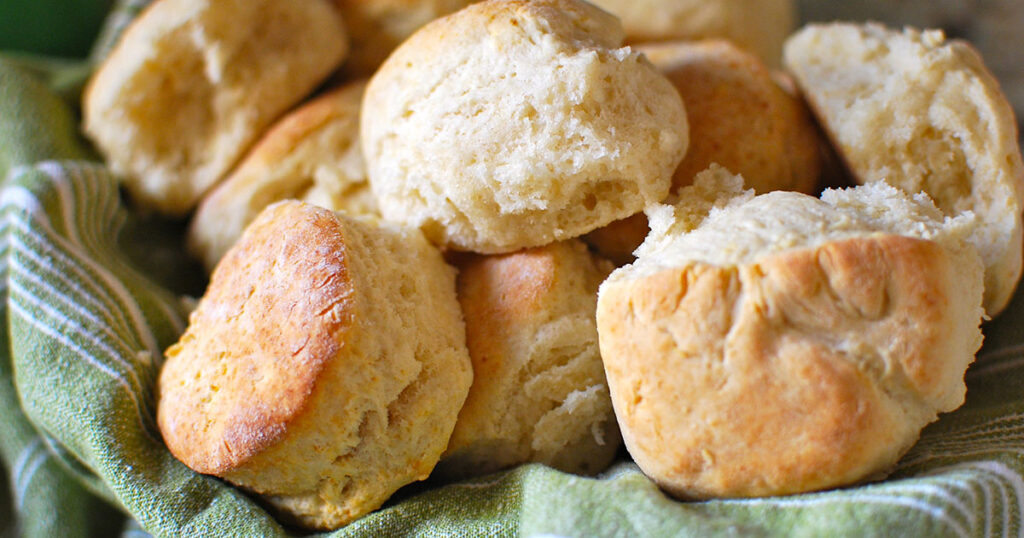
We eat decadently: hand-shaped meatballs plopped on bowls of spaghetti, scallops simmered in a stick of butter, panko-crusted salmon, and cake with grapefruit glaze. Now that it’s summer there’s brown-sugar pulled pork, burgers with cheddar, strawberries piled on homemade biscuits, and cobs of char-marked corn.
The calendar tells us, come out! Swim, attend weddings, and take vacations. Open your home for barbecues: watermelons sweating in awful humidity, long sunlight melting ice in the cooler. Here in Connecticut, restaurants have opened. I’d have thought we’d be first in line for a table! But we’ve got out of the habit. Eating out is appropriately burdensome (make a reservation, wear a mask) and questionably prudent. For now, it’s mostly the two of us, here inside, maniacally preparing our grocery lists. We mark the season with new meals. Instead of soups, we have salads. We ice our coffee.
At first, in March, it felt like survival, thinking of food all the time. We stockpiled peanut butter and beans. My mother mailed us packets of yeast. The fungi give rise to raisin buns and pizza dough. Then I got sick, with fever, cough, and fatigue. I ate saltines and applesauce, but mostly slept through meals. I didn’t lose my taste or smell, but I did lose my appetite. We rejoiced when it returned. Eating was a preparation, a fortification. Who knew how we might burn those calories, what virus our bodies would need nourishment to fight.
In April, as ambulances sped down our street, we ate for distraction and delight, skimming recipe blogs and following cravings. I made tacos and tapas and many desserts: weekday cookies with raisins and nuts; Black Forest cake, its depression filled with cherries; coffee cake like a cinnamon pillow. On Easter, we ate lamb with Dijon. For breakfast, frittatas and buttermilk pancakes. Culinary-minded friends put their pictures online: bundt cakes and simple syrups, Dutch babies and French coffees.
Should I admit we also took pictures? We did. I did. Put them up and waited for compliments on the cherry galette, the mounds of shallot risotto. Look how sumptuous our quarantine is! Look at the skills I possess! The ego says: don’t be ridiculous. The id says: use portrait mode on that ricotta.
Not all of the meals are perfect. The citrus ciambellone sticks in the pan. My pudding is lumpy. The burgers are salty. But this is encouragement to try again later, to master new techniques for searing, mixing, julienning. What will we have for dinner tonight? And tomorrow? And on Saturday? We need things to anticipate, especially now that we’re nearly through June. We also need control. The afternoons I devote to baking are exercises in discipline: exact quantities of dry and wet ingredients, precise timing and temperatures. I have hours and patience to chill dough in the fridge, just as the recipe requires. I test cakes with toothpicks. Only I decide when they are done, and when I will finally eat them—a power and an independence that, in other parts of my life, have been curtailed.
In On Beauty and Being Just, Elaine Scarry argues that engaging with beauty can make the engaged person herself more lovely. It’s a nice idea: that filling oneself with sonnets, symphonies, and birdcalls can improve your interior conditions. Is the same true of scarfing down cornbread with honey, or tahini dressing, or mountains of homemade whipped cream? (I’m always whipping cream at night these days.) Will all those spices and flavors and fats somehow make me more gracious and thankful, a more abundant person in a time of scarcity?
My husband and I, deeply inessential workers, have time to devote to pastry crusts and cocktails. Meanwhile, our town food bank pleads for essentials: plastic jars of peanut butter and jelly, canned soups and vegetables. Our abundance sits uncomfortably with surrounding scarcity, largely unmitigated by our donations and tips: all of which we could give more of, all of which feel insufficient.
When we place a match to a tealight, illuminating steak over tart tomatoes, soaked in the brine of green olives and vinegar, we are being indulgent: perhaps. There are too many food blogs. Instagramming my food, I know, is dumb. Dumb, and indulgent, but not quite wrong, for there’s real thankfulness here: the soft purple of ube ice cream, the crack of shortbread—colors and textures that exist in contrast to how bad everything is. Oven heat and the snap of boiling water, new discoveries in the study of quesadillas. Cooking doesn’t solve problems; it just makes us happy. Terry Eagleton calls these kinds of things culture: gifts that exist without clear utility. Summer is here! Peaches are coming. A resilient marvel, an excess.
With summer also comes violence: brutal scenes of racism, injustice, complicity. I feel despair and shame. My actions are small, my inactions are wide. Suddenly, what felt at least a little important—us here, laying our table—feels entirely foolish. At the same time, food becomes a small means of justice. The New York Times features Juneteenth red-punch cocktails. Lists of black-owned restaurants proliferate. In our town, the list is very short.
The country convulses as June draws on. More violence, and protest, policy, backlash. Somehow, strangely, daily life continues. We eat at a restaurant for the first time: gyro pitas at that Greek place, tablecloths whipping in the wind. We have some picnics, with others! I bake with farmers’ market fruits (the farmer and I wore masks). Peaches become cobbler, blueberries turn to scones. The world opens, groans, cries out, transmogrifies. In many states, case counts go up. We eat through our precious dried and canned goods, making foolish, hopeful room in the pantry.

